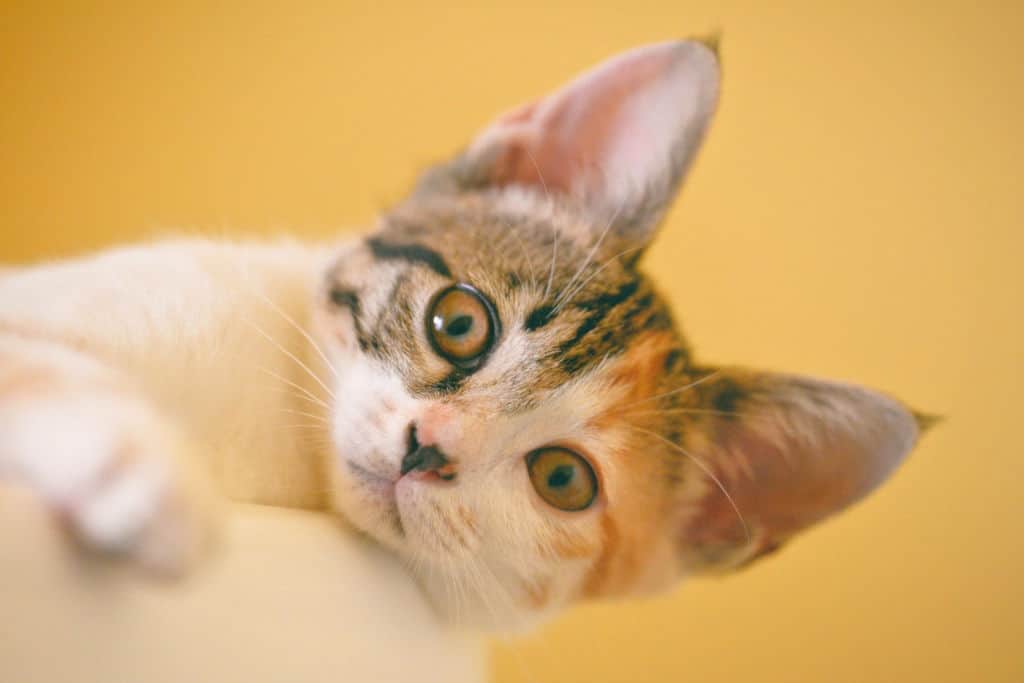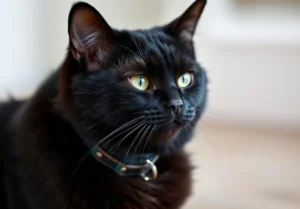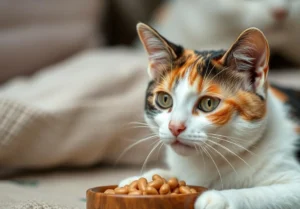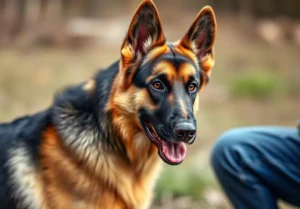Cats don’t see upside down but right-side up, just like humans. The only difference is that they can see more clearly in the horizontal direction, their colors are more washed out, and they can only clearly see a little bit in the distance.
Their vision is a bit different than ours, that’s for sure. Cats can’t see a lot of colors, and they are nearsighted. But they are swift to notice when something moves!

What Do Cats See When They Look at Humans?
While humans can see only around 180 degrees around them, cats can see about 200 degrees. Therefore, cats have a wider field of vision, making it easier to see that mouse (or toy) moving in the corner.
Cats that live in homes hunt tiny things compared to their size. So, sharpness in the horizontal direction is very important for a mouse that moves from side to side.
Because of how their pupils work, they see things with a blur in the vertical direction, but the horizontal is clear. If their prey tends to run sideways, they can let more light into their eyes and still see exactly where their prey is going.
They have more rod cells in their eyes, which makes them more sensitive to light and helps them see better in the dark. They also update more quickly, which lets them pick up on movement better. The bad thing is that their sense of color is more “washed out.”
Beyond the physical aspects of their vision, cats interpret what they see in unique ways. When observing humans, they notice our body language, routines, and even our moods. Subtle gestures, like the way we approach them or our tone of voice, can convey different meanings in the feline world. This inter-species communication is fascinating and reinforces the bond we share with our feline companions.
How Do Cats See in the Dark?
Because their pupils can get bigger, cats can see better in dim light than people. So, like us, they need some light, and up to a point, the more, the better. Bright lights can make it hard to see as much as having no light.
Cats are usually hunters who don’t need to see many colors in their surroundings because they need to see how their prey moves and have good night vision when they hunt.
It’s important to note that cats can’t see in total darkness. They need some (very little) light to see, but they can still get around pretty well using their hearing, paw pads, and the air currents on their whiskers, which are on their face, sides, and backs of their front legs.
Why Do Animals Have Differently-Shaped Eyes?
Animals’ pupils have changed shapes to help them do important things to their lifestyles, like see better at night or get a better sense of depth. There are three main shapes in mammals.
Large animals and foragers tend to have round pupils. It’s so common because it’s easy to use and can find details over a reasonably large area.
The vertical slit pupil is most common in small ambush predators, such as cats, that hunt at night. It lets the pupil change size a lot so that it can work both during the day and at night.
It also has a depth of field effect that helps small predators figure out how far away something is, so they know precisely how far they need to jump or strike to hit their prey.
Herbivores most often have horizontal pupils. These eyes give a wide horizontal field of view for the most awareness. Animals that graze can turn their eyes in their sockets so that when the head bends, the pupil can turn to stay level.
For cats, it has to do with when cats go hunting. Most cats hunt at night, so they need more light and will lose clarity in one direction to get it. On the other hand, daytime hunters benefit from having round pupils (and perfectly focused prey).
You can still focus on an object with slit pupils, but you must first know where the thing is. The slit pupil, such as the one in house cats, lets vision be clearer along one axis, no matter how far away or in focus.
Which Animals See Upside Down?
No animal sees upside down. As long as your vision, other senses, and taxis work together, it will always be right-side-up. It wouldn’t make sense for an animal’s sight to be different from its other senses.
All animals with “camera eyes” get an upside-down image on their retina, but the brain figures out what it means, so things above you are seen as above you and not below you. So, no animal can see things upside-down or backward.
Do Human Eyes See Upside Down?
Our eyes have curved lenses. When we look at something, it appears upside down because the other side of the lens in our eyes is concave and maps the image upside down in the back of our eyes.
That image is picked up by our optic nerves, sent to the part of our brain that is in charge of processing that information, and then put back in the right place.
All the light that comes into your eye is turned around a central axis, so it is not only upside down but also moves from left to right. For example, light from your computer’s top left corner is focused on the cells of your retina’s bottom right.
However, saying that your brain sees the world upside down is a misconception. From the optic nerve’s point of view, there is no right way up. What’s more, information travels down your optic nerve very predictable way.
Why does it matter where the sensor (retina) is? You can say that one way is “up” and the other is “down,” and all the processing will be set up to match.
In any case, because we have many cones in our eyes, people can also see much more detail and a wider range of bright colors. For example, people can see things clearly from 100 to 200 feet away (30 to 60 meters), but cats can only see about 20 feet (6 meters).
FAQs
Do cats see color?
Cats only seem to have green and blue color receptors, while people have three (green, blue, and red). So, everything that looks red to us might look very light green to a cat. Some experts think cats can only see blues and grays, while others believe their color vision is similar to dogs’ but with less richness and saturation.
Do cats see better than dogs?
Dogs have a greater field of vision than cats and humans, about 240 degrees (compared to 200 in cats and 180 in humans). Both dogs and cats can detect very low light levels, but cats beat dogs in dark vision. However, dogs’ color recognition is slightly better than cats’, and they can also see further.
Is it okay to look a cat in the eyes?
Cats may see eye contact as a sign of aggression, and you shouldn’t stare directly into their eyes for too long. When you look at your cat, you should try to blink slowly. This way, you’re telling your cat that you think you’re comfortable with them and that they’re not dangerous.
Alex, a passionate animal lover, has experience in training and understanding animal behavior. As a proud pet parent to two dogs and three cats, he founded AnimalReport.net to share insights from animal experts and expand his knowledge of the animal kingdom.




